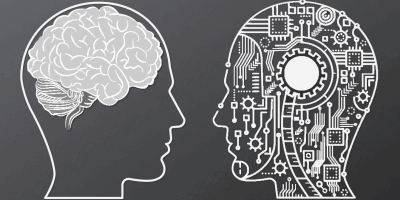The Value of Human Translation

This article was originally published on the Translorial blog and has been reposted here with the author’s consent.
Can impactful human-to-human communications be outsourced successfully to AI?
I’m a technophile. In my very human career field of translation and copywriting, I embrace technology wholeheartedly. I also advocate for it when I teach and mentor others. I think tech skills are just as critical as language skills for a successful career in translation.
So I don’t dislike AI. On the contrary, I am fascinated by the promise of emerging technology and enjoy experimenting with AI. But because I’ve seen what AI cannot do, I’m dismayed to see it emerging as an existential threat to many in my profession.
The usefulness of AI in language services has been vastly oversold—driven by ignorance or profit motive—and I fear that customers who are told that free or cheap AI solutions can duplicate time-consuming human language services will discover that the old adage always applies: You get what you pay for.
- GIGO. AI doesn’t “think,” of course: It extrapolates based on the massive amounts of data it hoovers up. But this Roomba-on-steroids is also sucking in broken glass and thumbtacks—subpar translations and outright errors—which, by design, it dutifully spits out again.
- AI skips what it doesn’t know. I see this again and again: It skips the hard stuff, the nuances. In my language combination of German to English, AI notoriously ignores the modal particles (gerade, immerhin, doch, wohl, gar, bloß, eben …) that lend so much character to good writing. It does this because the solutions are too vexingly context-specific, and because it learns from subpar human translations (back to GIGO 👆). The result is a translation that lacks the sparkle and impact of a good source text. And that’s a shame.
- AI hallucinates. This is an open secret at this point. It seems to abhor a vacuum so much that it inserts “best guesses” where it lacks data, and it also seems oddly eager to please its human prompters.
Bottom line: AI results need careful scrutiny.
But are they helpful as first draft? Does AI save time in the overall process of producing a useful translation?
No. More on that below.
We translators rarely receive perfect texts to translate. A good translator will always correct errors, check facts, test and localize hyperlinks, fix formatting errors, and work with the client to clarify ambiguities. We glean the essence of the source text and deliver the message clearly and idiomatically in the target language. This is strictly gray-matter added value that goes well beyond the capabilities and mandate of AI solutions.
The most common compliment we translators get is: “Wow, your translation is better than the original!” That’s because no one scrutinizes a text as carefully as a good translator—not even its author.
Liefersicherheit is not “delivery security”
Some real-world examples from my work for the German logistics industry: In my own language combination of German to English, AI-based machine translation (MT) is still unable to consistently see beyond German’s notorious compound nouns to produce a natural English. An example I’ve seen over and over again is Erhöhung der Liefersicherheit translated as “increased delivery security” (wrong sense of Sicherheit!) or “increasing delivery reliability” (said no one, ever) instead of more robust supply chains or increasing supply chain resilience, which is what a good translator would instinctively write and what someone reading the English text would actually understand. The web is already full of proclamations of “delivery security”—just ask Linguee, which scraped the internet for years to build the leading MT tool DeepL. But this kind of self-propagating robot reflux is only good for reducing translation expenses, not for actually getting potential customers to stop scrolling and swiping.
Moving from a merely uninspired translation to a dangerous mistranslation, here’s a jaw-dropper from my experimentation with DeepL. Can you spot the error?

It’s hard, because this is not the kind of translation error (…ungenauigkeit = inaccuracy) that we would expect a machine to make. I only spotted it because the target text was counterintuitive, and my human brain was turned on, which is what my clients pay me for!
AI’s working model leads it to endlessly propagate human errors unless corrected by vigilant humans during machine translation post-editing (MTPE).
But how likely is that? Not at all, since MTPE is not prestigious or lucrative and is therefore often handed over to lower-skilled linguists. And the temptation is strong—given how shiny and “right” the translations appear—to skip the post-editing altogether. Everyone loves free.
The above examples are just anecdotal, of course. Individual mistranslations can be fixed. What’s problematic is the fundamental structural flaws that produce such errors to begin with, and will continue to do so.
If the accuracy of a cheap or free translation cannot be trusted, does it have any value?
It’s often argued that AI is the perfect tool for low-value texts that otherwise wouldn’t be translated. But if the accuracy of a cheap—or free—translation cannot be entirely trusted, does it have any value? Indeed, might it not actually be worse than no translation at all, since it creates risks of reputational damage and legal liability?
Since we cannot trust AI to compile error-free translations, someone has to comb through gigantic haystacks looking for the needles that almost certainly lie within. This kind of work is mind-numbing and difficult for humans, so it means most needles will never be found.
The pertinent question here: Is it more promising to meticulously search haystacks for needles, or to build your own needle-free haystack from scratch?
Language is a tool for humans to connect with other humans. Texts that are carefully written by humans and for humans in one language—whether product documentation, legal arguments, financial disclosures, marketing copy, literature, or anything else of significance—deserve to be just as carefully translated if they are to have the same impact in another language.
This is the message that we translators must continually make to serious clients in this new era of AI.
About the Author
 Michael Schubert is an ATA-certified German-to-English translator providing premium translation services with a focus on corporate communications for the software and logistics industries. He is also an Adjunct Professor for German-to-English translation at the Middlebury Institute of International Studies at Monterey. Michael is a native Californian who lived in Germany for over a decade and now resides in Paris. More at www.michaelschubert.com.
Michael Schubert is an ATA-certified German-to-English translator providing premium translation services with a focus on corporate communications for the software and logistics industries. He is also an Adjunct Professor for German-to-English translation at the Middlebury Institute of International Studies at Monterey. Michael is a native Californian who lived in Germany for over a decade and now resides in Paris. More at www.michaelschubert.com.
1 Comments
Leave a Comment Cancel Reply
Language Services Directory
Subscribe to The ATA Compass
Connect with The ATA Compass
Recent Posts
Why You Should Use a Certified Translator or Interpreter
Choosing a Certified Professional is the Smart Choice A certified translator or interpreter ensures effective, accurate, and culturally sensitive communication that truly bridges the gap between languages and cultures. Accuracy…
Read MoreThe ATA Compass
Want to reach more customers, grow your business, and improve your bottom line? The ATA Compass publishes articles and provides resources to show you how language professionals can help you…
Read MoreKnow Your Rights to Language Access
Is English Not Your Primary Language? If you have a limited ability to read, write, speak, or understand English, you are considered to be Limited English Proficient (LEP). As an…
Read MoreBuying Language Services
Guide to Buying Translation Services Translators help power the global economy, working with businesses, governments, non-profits and individuals. Translators work with the written word. The ATA Guide to Buying Translation…
Read MoreClient Assistance
Can I afford to hire a professional? You can’t afford NOT to. Poor translation and interpreting services can be disastrous for your business. See what’s at stake. Learn More What’s…
Read MoreLanguage Services Directory
Start Your Search ATA’s Language Services Directory includes a list of all ATA members of individuals, as well as companies. Need help finding the right professional? Professional translators and interpreters…
Read More







Michael, this article is full of valuable insights, compelling examples, and clear explanations. It is an article that we, translators, should have always at hand to be able to quote it when we talk about translation and AI influence on it. Thank you for taking the time to write it.